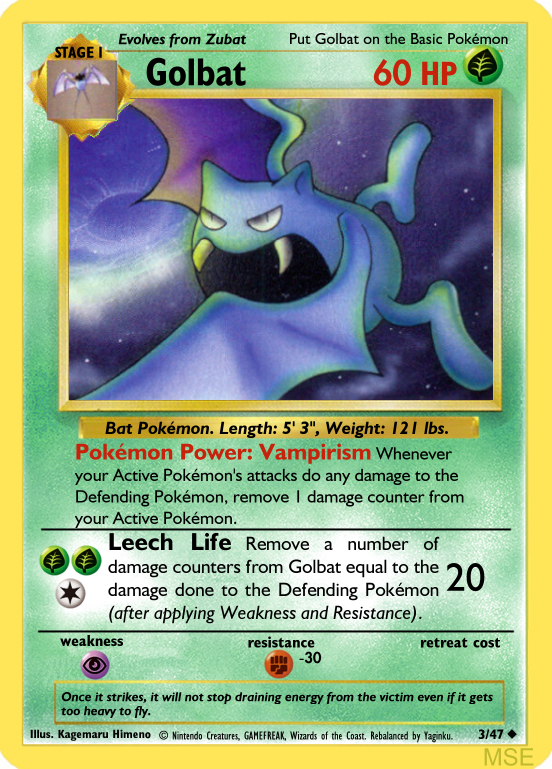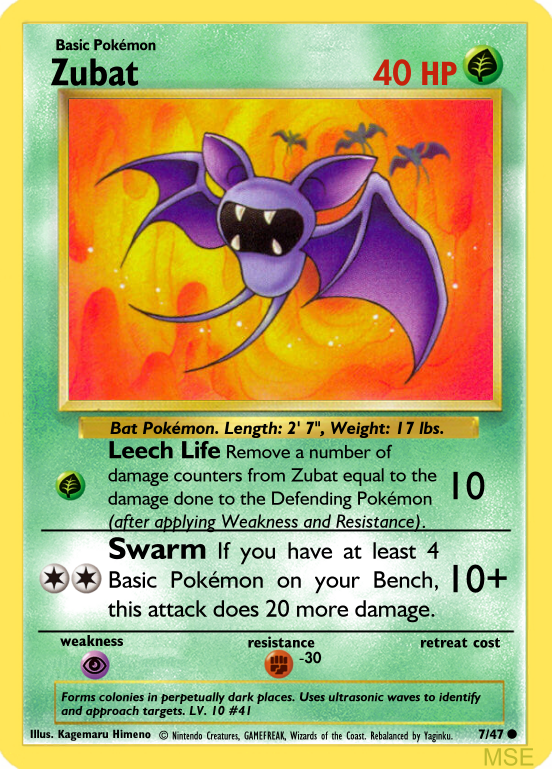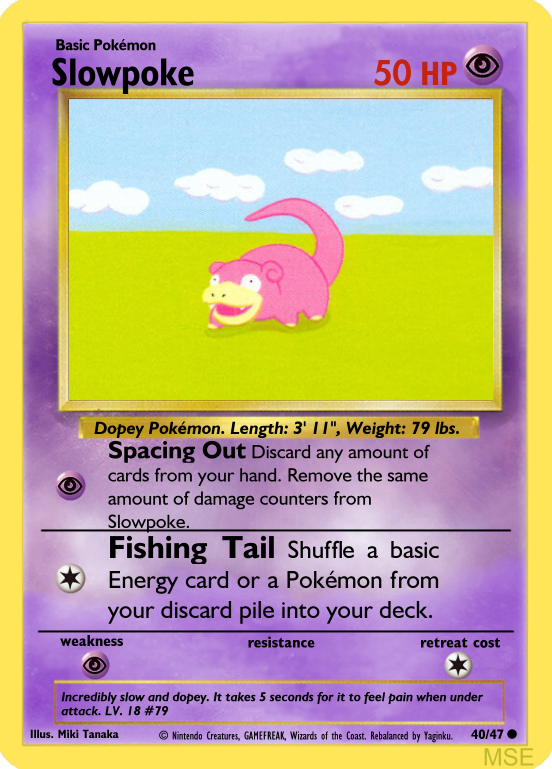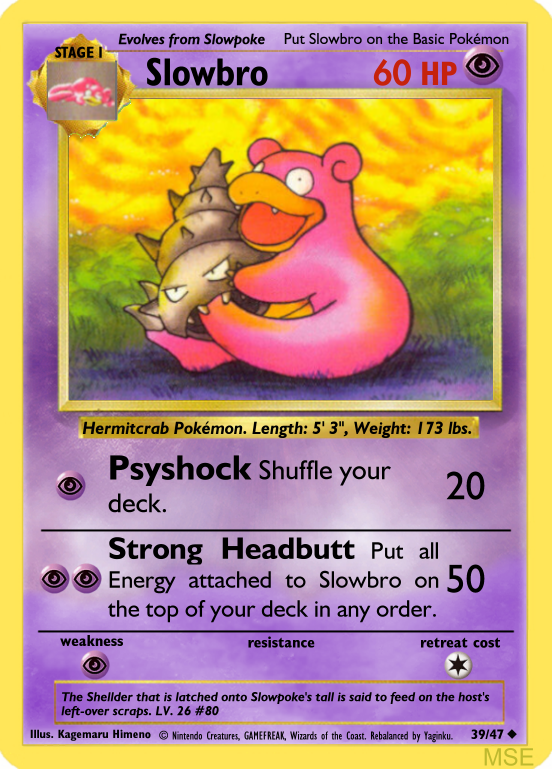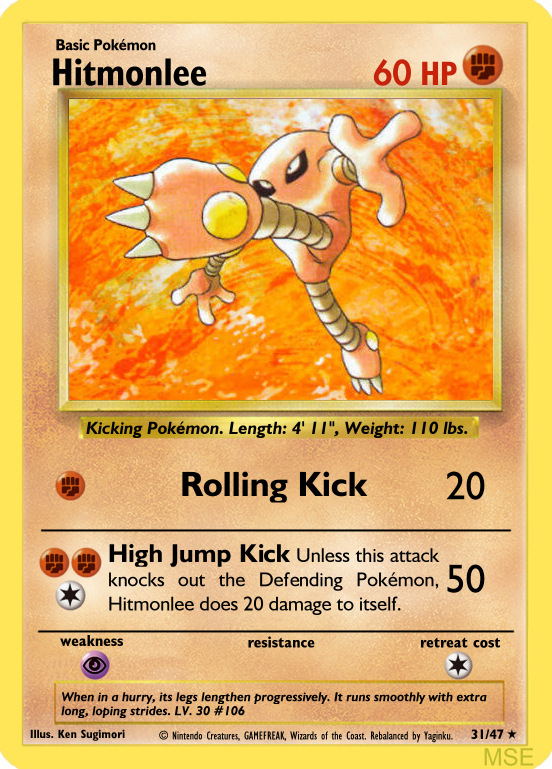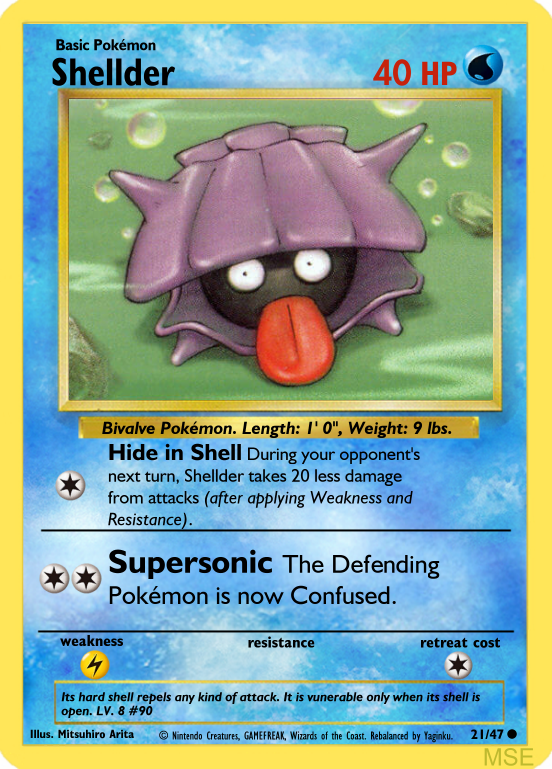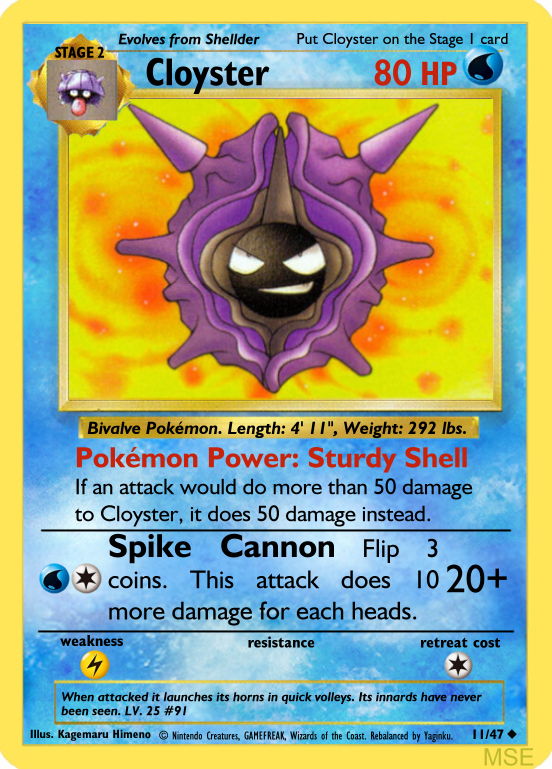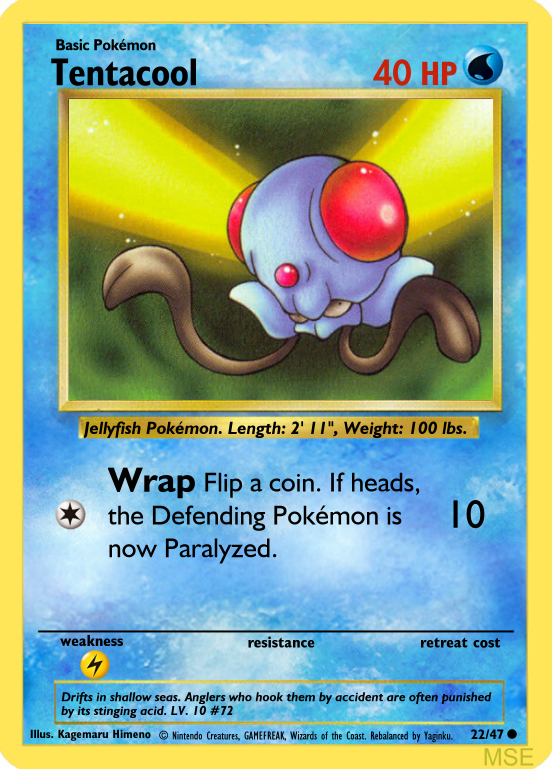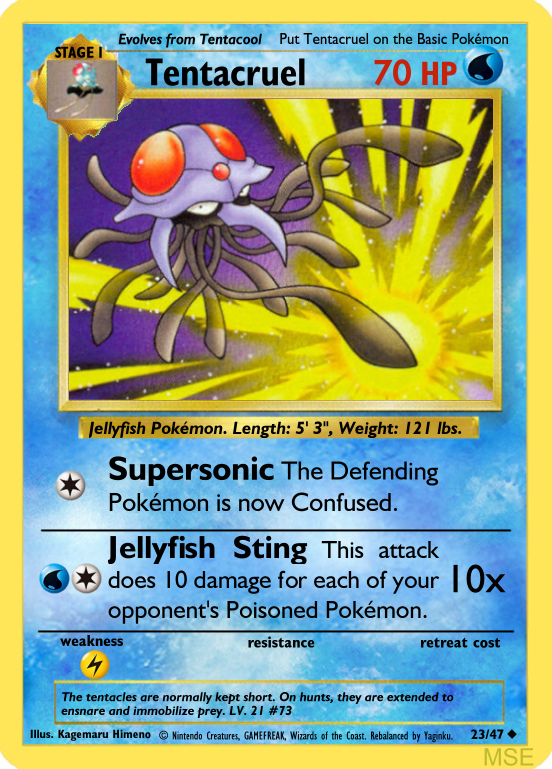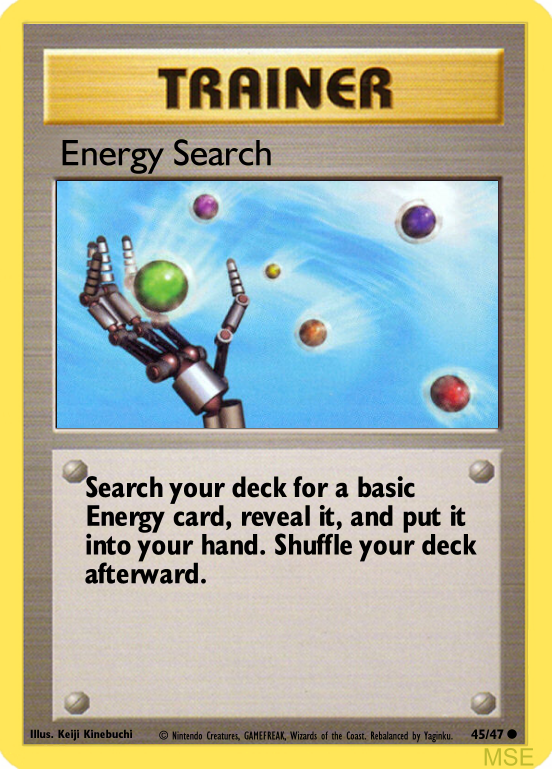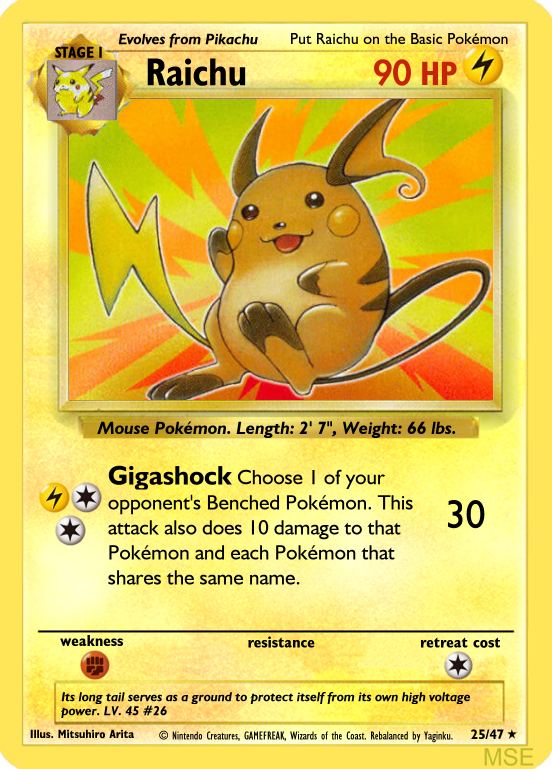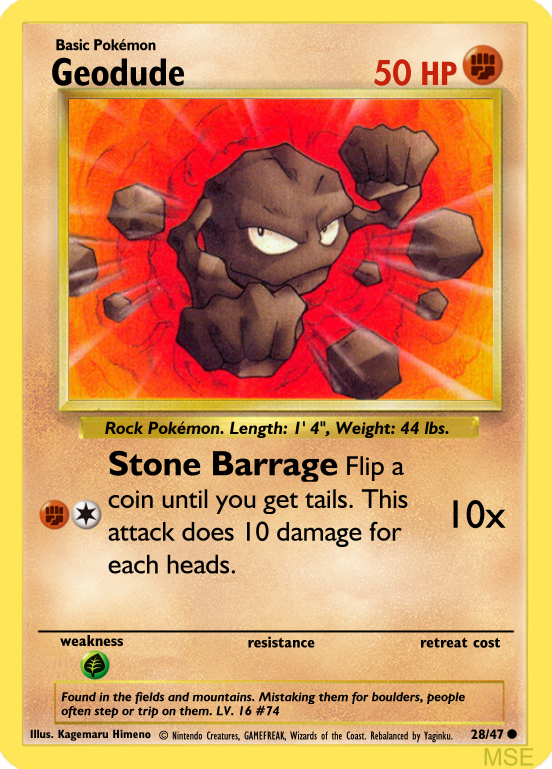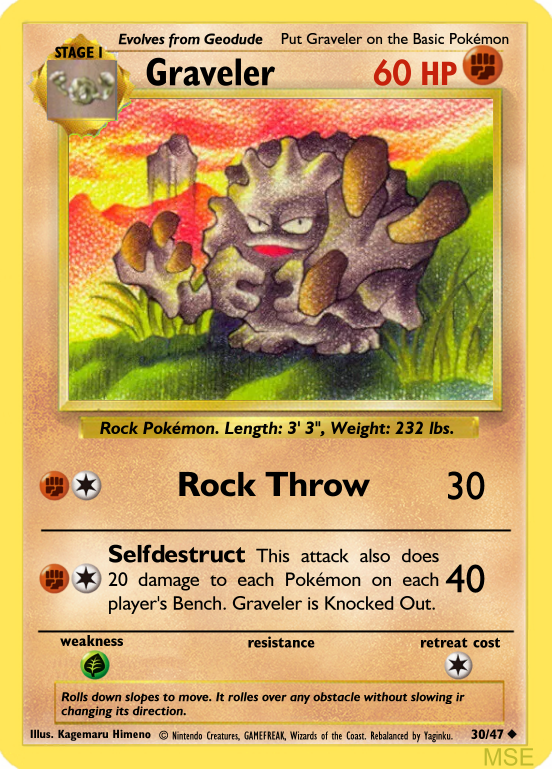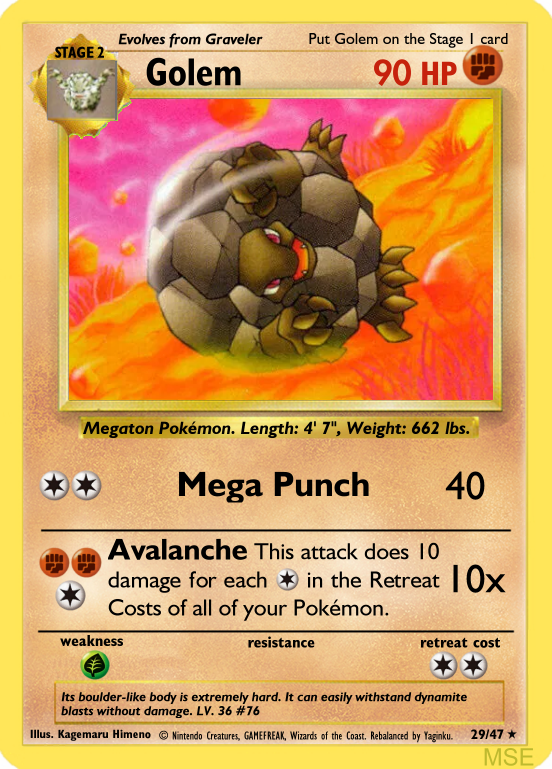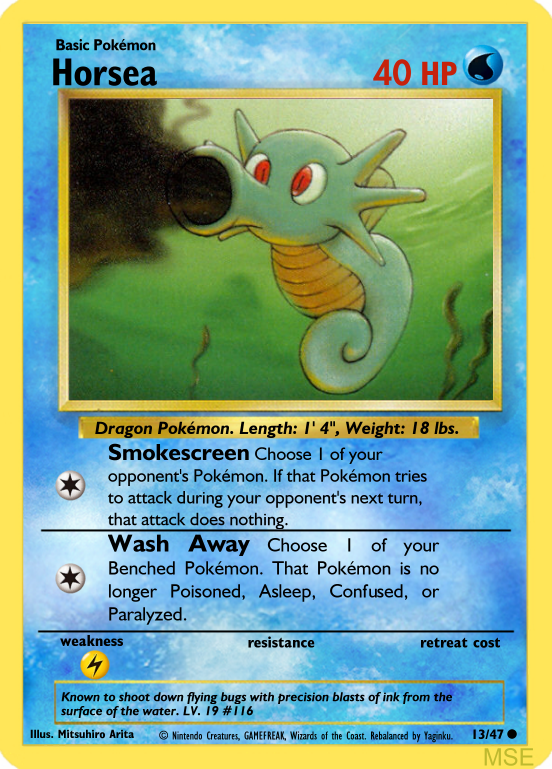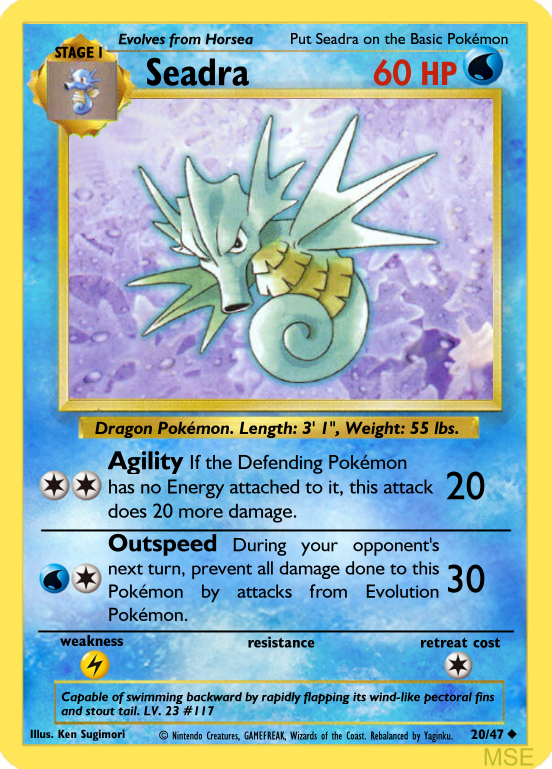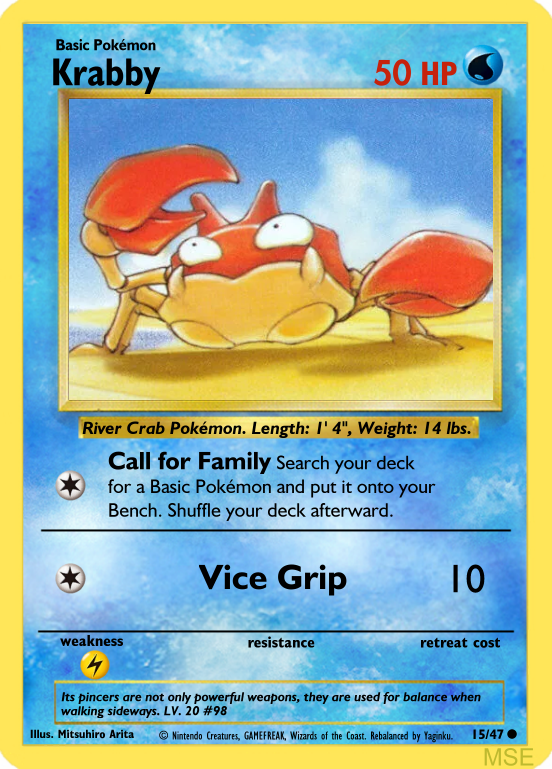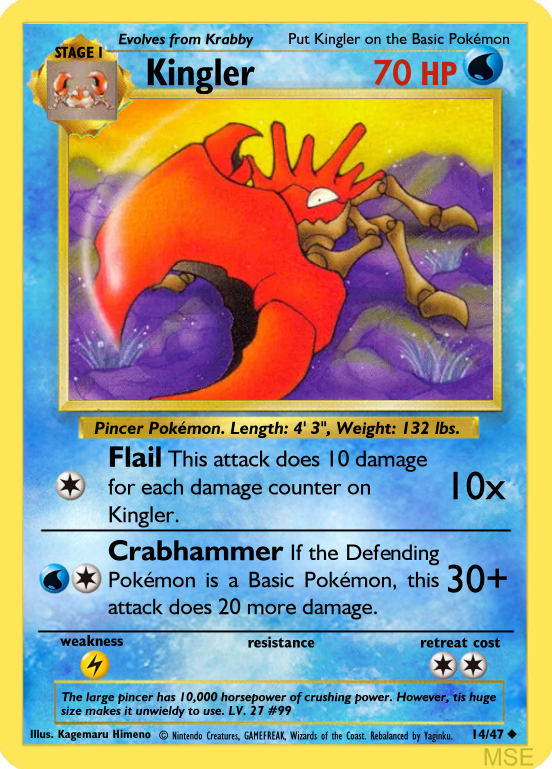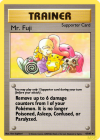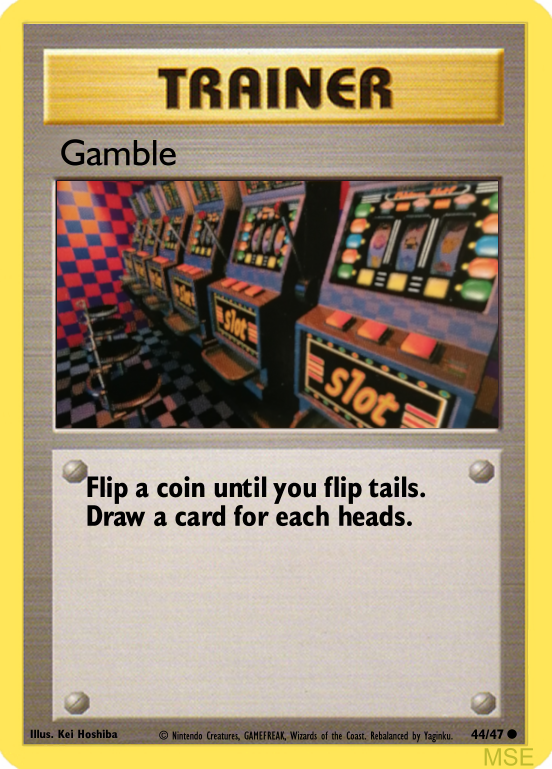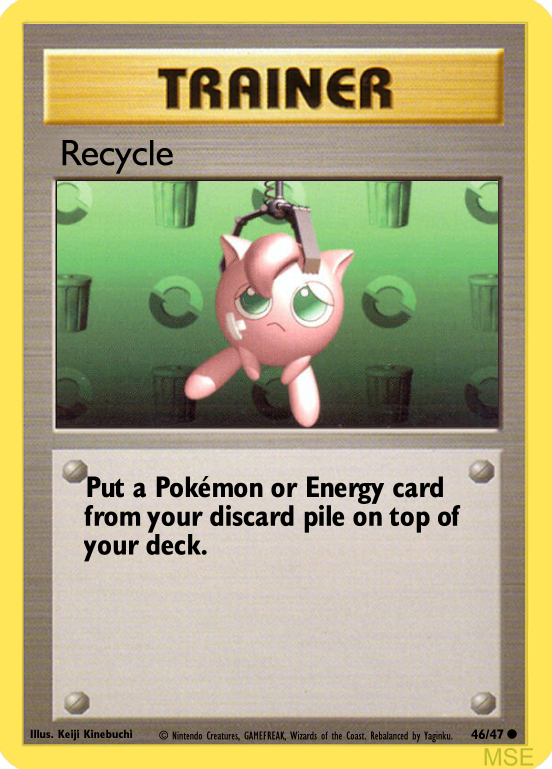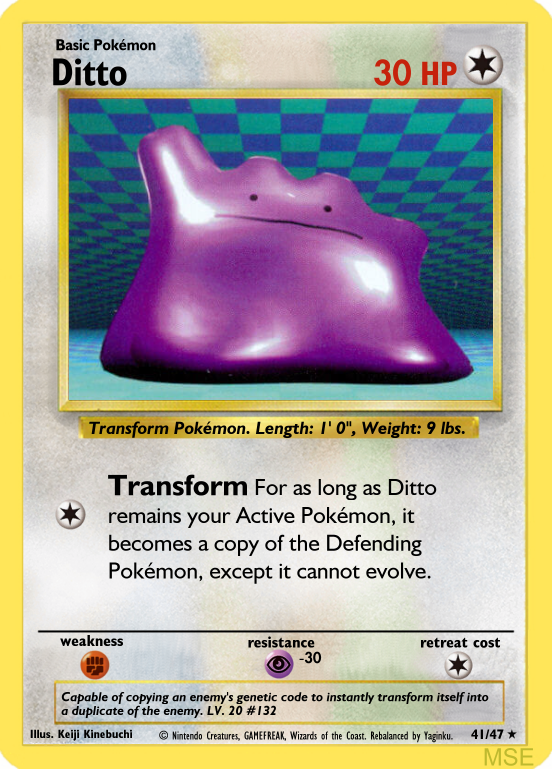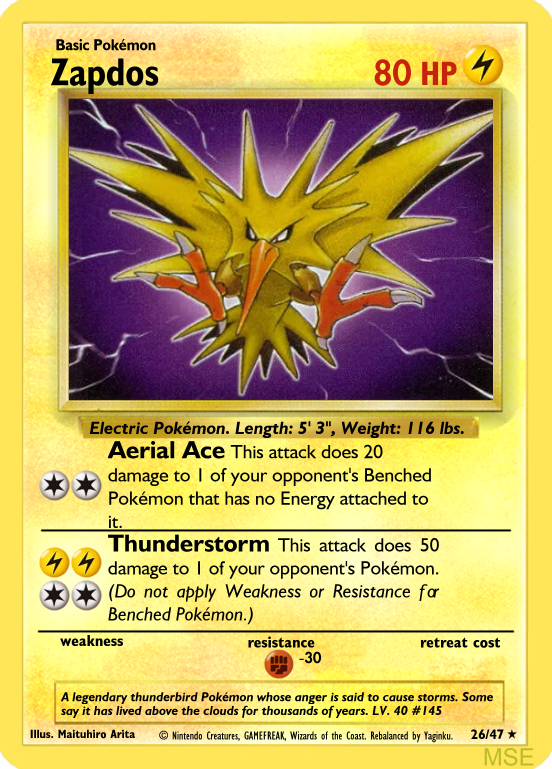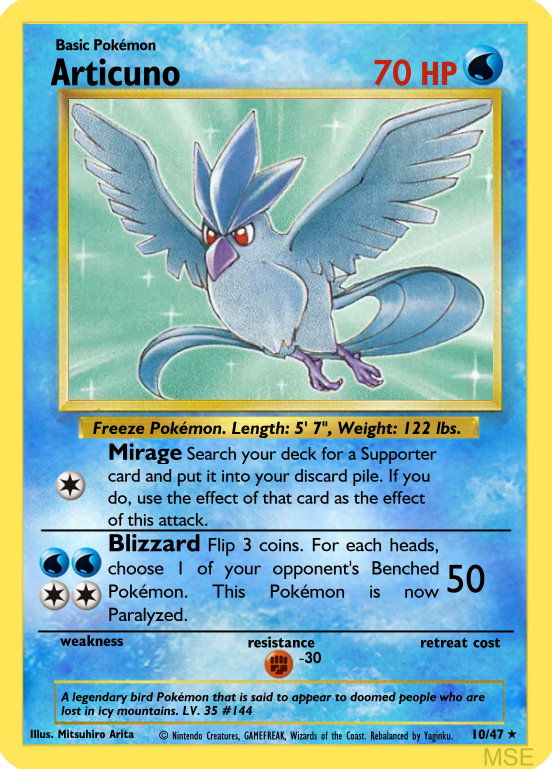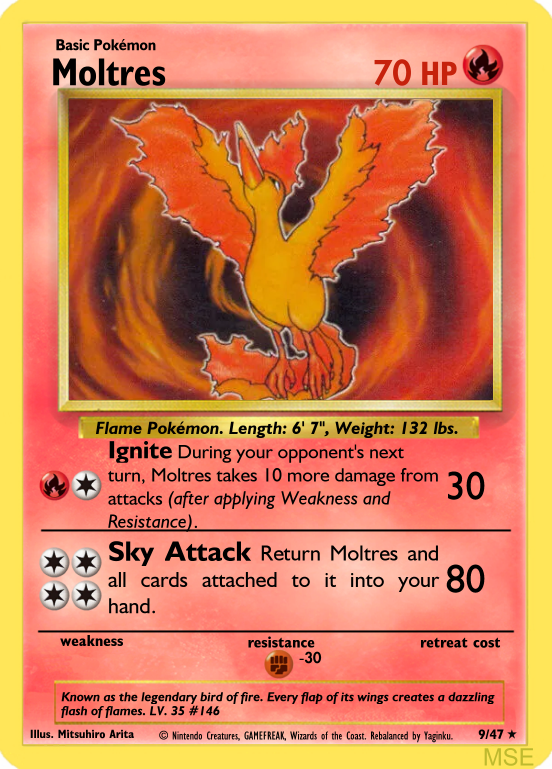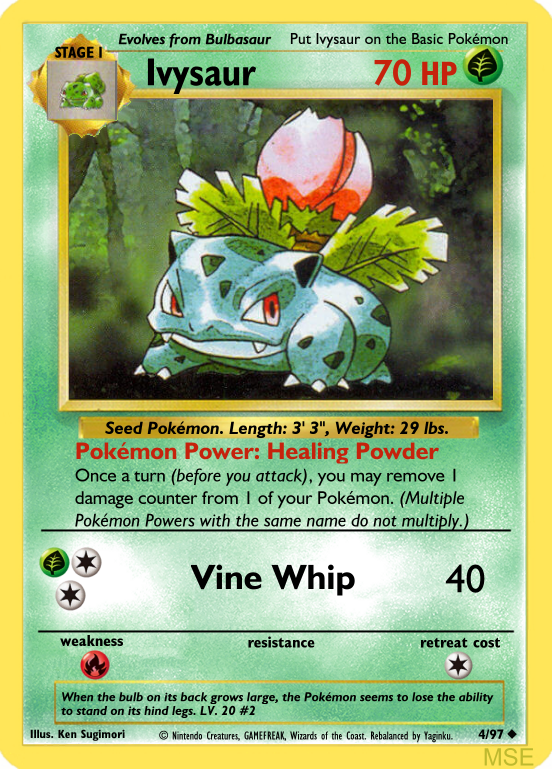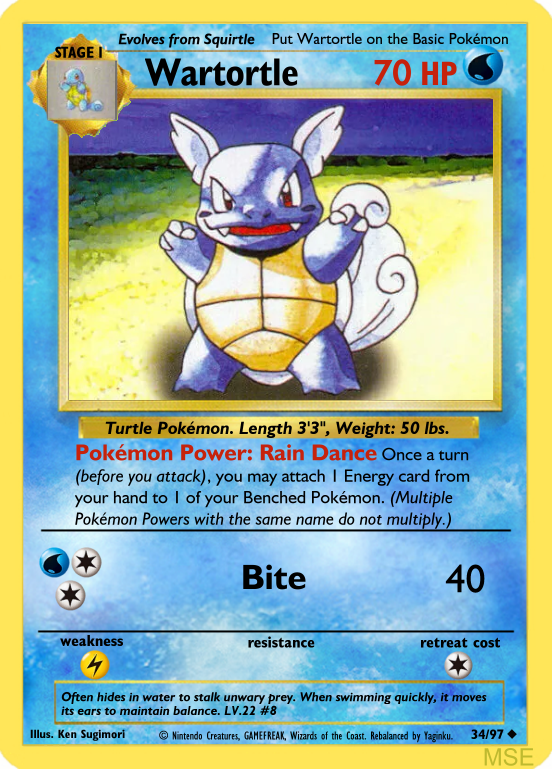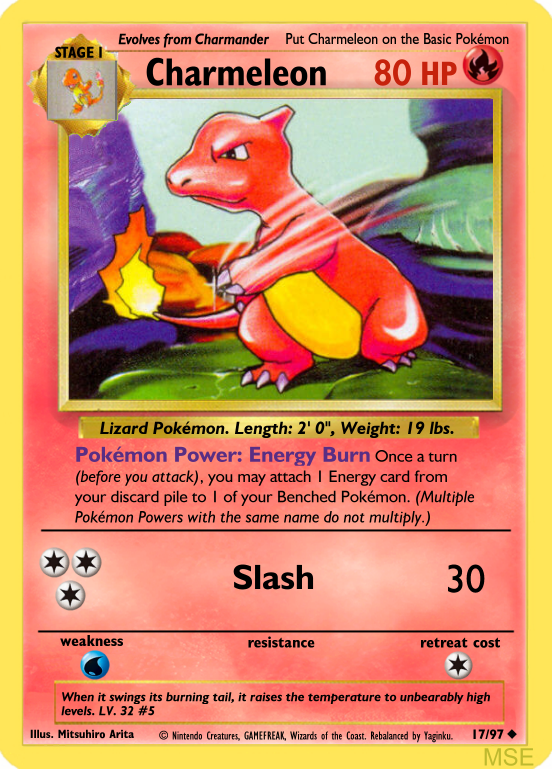Today’s post is plain and simple - we’ll cover three singular Pokemon, going from the least changed to the most changed.
Ferry Nice
When it comes to the Base Set - Fossil format, Lapras wasn’t too bad at all. It’s another one of these cards that are an unevolved Basic, meant to guide you through your early game, while having a bit of utility as the turns go by. The changes I’ve made are minimal - the attacks are the same, only the Confusion Ray got the much-needed double colorless cost, instead of double water.
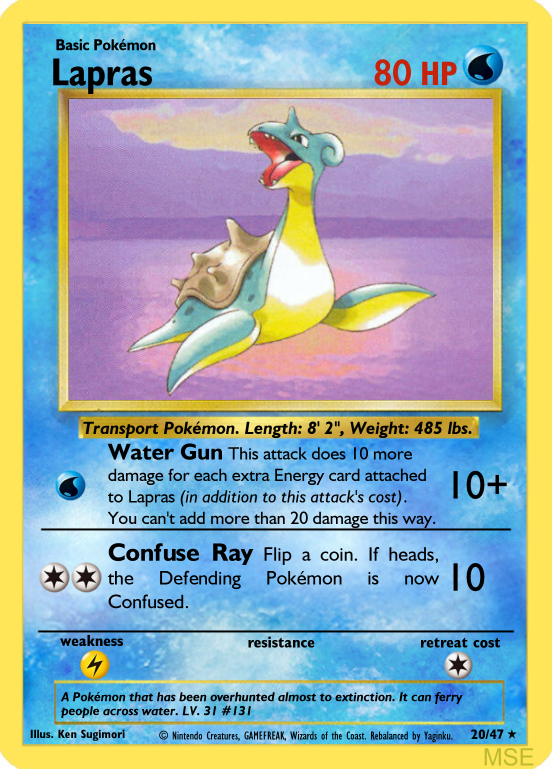
This Ain’t a Popularity Contest
Gengar is a card I’ve alluded to multiple times before. It’s the only Stage 2 in the format with two sets of cards evolving into it. I knew I wanted to keep Gengar’s ability to move your opponent’s counters and, in fact, I tried making it a little bit more explosive, to help with those turtling decks.
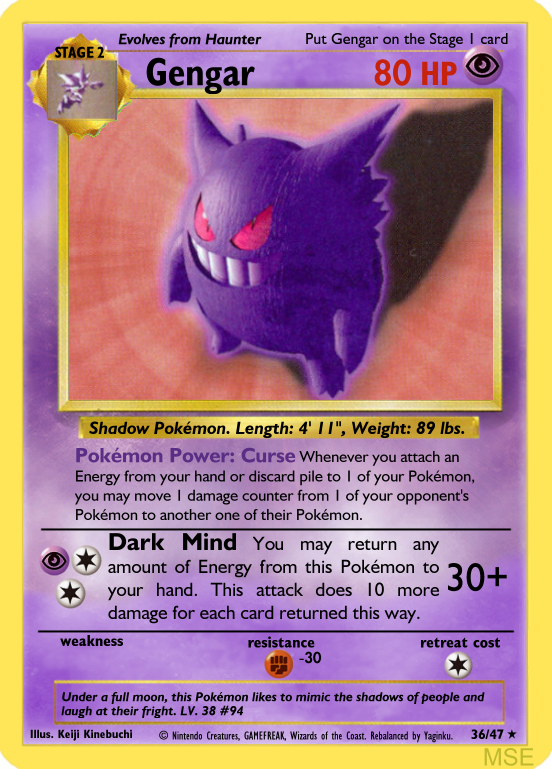
Curse works generally in the same way - it’s usually going to move a single damage counter per turn. However, you’ve got the option to trigger it multiple times, provided you’ve got the acceleration to make it happen.
Dark Mind is just the Japanese name for Night Shade. The original featured some spread damage, and I wanted the rework to also “combo” with the ability. I like the fact that an attack called “Dark Mind” interacts with your hand, which you can see as “your mind”, since it’s only visible to you. By putting Gengar’s Energy into “your mind”, you increase its attack power exponentially, while getting the chance to accelerate it all over again.
The Magneton Effect
Magneton makes a second appearance, in its original form with another Self-Destruct attack. At this point I have realized that Magneton never actually had the ability to learn Self-Destruct in the games, and that’s the case even today. Magnetons just don’t blow up, even though the early TCG tried to pretend like it did, twice.
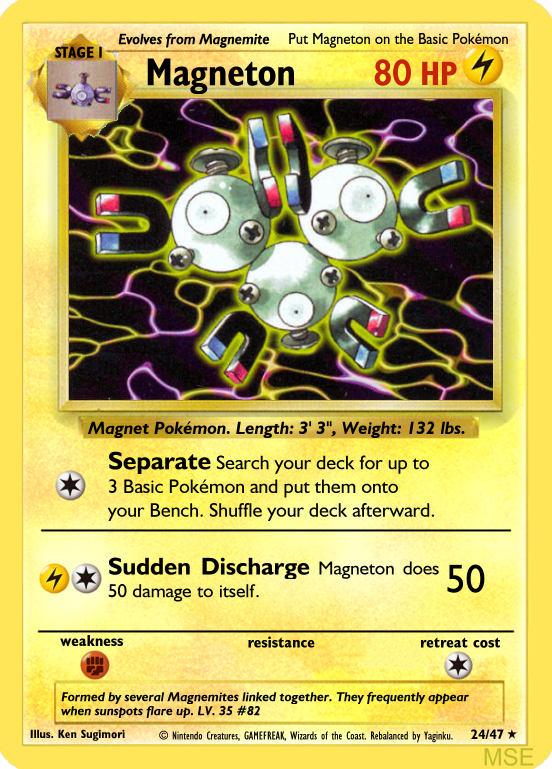
Electric Pokemon are supposed to have “explosive” attacks, and Sudden Discharge is definitely one of them. It skims the edges of Self-Destruct, but asks your opponent to finish the job. I suspect this attack will make for a great Electric splash, if you need it.
Ferry Nice
When it comes to the Base Set - Fossil format, Lapras wasn’t too bad at all. It’s another one of these cards that are an unevolved Basic, meant to guide you through your early game, while having a bit of utility as the turns go by. The changes I’ve made are minimal - the attacks are the same, only the Confusion Ray got the much-needed double colorless cost, instead of double water.

This Ain’t a Popularity Contest
Gengar is a card I’ve alluded to multiple times before. It’s the only Stage 2 in the format with two sets of cards evolving into it. I knew I wanted to keep Gengar’s ability to move your opponent’s counters and, in fact, I tried making it a little bit more explosive, to help with those turtling decks.

Curse works generally in the same way - it’s usually going to move a single damage counter per turn. However, you’ve got the option to trigger it multiple times, provided you’ve got the acceleration to make it happen.
Dark Mind is just the Japanese name for Night Shade. The original featured some spread damage, and I wanted the rework to also “combo” with the ability. I like the fact that an attack called “Dark Mind” interacts with your hand, which you can see as “your mind”, since it’s only visible to you. By putting Gengar’s Energy into “your mind”, you increase its attack power exponentially, while getting the chance to accelerate it all over again.
The Magneton Effect
Magneton makes a second appearance, in its original form with another Self-Destruct attack. At this point I have realized that Magneton never actually had the ability to learn Self-Destruct in the games, and that’s the case even today. Magnetons just don’t blow up, even though the early TCG tried to pretend like it did, twice.

Electric Pokemon are supposed to have “explosive” attacks, and Sudden Discharge is definitely one of them. It skims the edges of Self-Destruct, but asks your opponent to finish the job. I suspect this attack will make for a great Electric splash, if you need it.


